Using Foils without a Machine? Oh, yes…
Hello my dear Graphics Fairy Friends!
It’s Heather from Thicketworks, here to share a recent experiment!
We’ve all seen the gorgeous foils that are on the market…but some of us can’t justify investing in a Laminator or similar machine.
And frankly, some of us {you know who you are…} can’t be bothered to pull out the Big Shot or similar embossing machine in order to add a bit of foil to a paper project.
Perhaps you can relate?
Well, I’m here to show you just how easy it is to incorporate fancy foils without the fuss or expense of the ‘standard’ methods!
I’ve tested a variety of surfaces, just to see how far we can take this madness!
Are you ready to learn How to Gild with Foils?!
{this post contains affiliate links}
Here’s a list of the items used in this demonstration…
Supplies:
- Foil – I love the brilliance of this brand!
- Zig 2 Way Glue (I had the fine tip glue pen, but I suggest using the large chisel tip pen)
- Ranger Inkssentials Ink Blending Tool
- A palette for dispensing the adhesive (I used an old ceramic dish)
- Your favorite rubber stamps
- Smooth Cardstock
- An old credit card or similar
- A soft cloth
- Mona Lisa Spray Sealer for Metal Leaf (use when foiling decorative items like jewelry)
- Double Sided Crafting Tape (use when adding lines or stripes)
- Sticky Backed Foam Sheets (die cut or punched into fun shapes)
How to apply Foils without a Machine:
#1 Rubber Stamp Method
Remove a sheet of foil from the packaging – the sheets are very thin, and can be separated by sliding them apart.
Dispense a generous amount of Zig 2 Way Glue onto a smooth, non-porous surface.
Use a Blending Tool to absorb the adhesive.
Tap the surface of the rubber stamp with the Blending Tool, making certain to cover the entire surface:
Quickly stamp the image onto smooth cardstock and lift immediately.
Note: If the stamp contacts the paper for too long, it will tear the paper when removed.
Here, you can barely discern the impression made by the stamped adhesive:
Allow the glue to dry…this can take a few minutes, but it’s very important.
The foil will not adhere properly to the adhesive while it is still in liquid state: it must have a tacky surface to activate the transfer of foil to substrate.
Once the glue has dried, gently place a sheet of foil, metallic side up, onto the glued image.
Use the pads of your fingers to press the foil against the adhesive.
Once the foil has made good contact with the adhesive, use an old credit card to burnish the foil against the surface.
Use quite a bit of pressure.
Test the results by peeling one corner of the foil away.
If the foil has not fully transferred, replace the foil and burnish again.
With the correct amount of adhesive + burnishing, the resulting Foil Transfer can be extremely detailed:
This method works for larger scale stamps, as well.
Just work quickly so that the glue does not begin to set up before you stamp the image on the cardstock!
You can continue to stamp images while the previous application dries.
This slightly distressed transfer was created by using a section of the foil that had portions removed by a previous application.
Note: Cleaning your Stamps and Blending Tool – Zig 2 Way Glue is water soluble. Place your stamps and foam blending pad into warm soapy water for a few minutes. Use an old toothbrush to scrub the remaining adhesive from the surface of your stamps…and just squeeze and rinse your blending foam!
#2 Foiling an Uneven Surface
These jewelry components are made of cured black polymer clay. They have been highlighted with mica powders and sealed.
Let’s see if we can highlight the contours with foil!
Tap adhesive on the upper surfaces of the castings.
Allow to dry.
Place the foil, metallic side up over the items and press the foil against the adhesive with your fingertips:
Use a soft cloth to burnish the foil against the surface.
Press firmly!
Test to see if the transfer is successful:
When complete, use a good quality Gloss Sealer to protect the surfaces, and cover any remaining stickiness.
The results remind me of Gilded Ornaments that are just beginning to show signs of wear and tear…
#3 Foiling over Acrylic Craft Paint:
This strip of plastic molding has been given a mild verdigris finish with cheap craft paints.
It has not been sealed.
Apply adhesive to the areas you’d like to highlight:
Press the foil down with fingertips, then burnish firmly with a soft rag.
Reveal the Distressed Gilding Results:
#4 Foiling over Metal Paints:
This plastic decorative molding has been painted with Modern Masters Iron Paint, and then rusted with a chemical agent.
It has not been sealed and has a very matte finish.
Apply adhesive, press the foil into place, then burnish firmly with a soft cloth.
Below, you can see the imprint of the bas relief in the foil sheet – this is a good sign that the foil transfer is successful.
Finish by sealing with a good quality Matte Spray Sealer.
Both of these applications result in a lovely time-worn appearance:
#5 Foiling Corrugated Cardboard:
This ordinary corrugated cardboard has been painted to resemble a rusted surface.
It has not been sealed.
By following the same procedure, we can ‘gild’ just the upper surface of the corrugations:
The juxtaposition of the rusty matte underlayer + the intense shine of the foil is unexpected and striking:
#6 Foiling Hard Rubber:
This beat up cell phone cover has little charm…can we give it some personality?
Here, you see the adhesive impression of the Rubber Stamps used to create the design, while the adhesive dries:
And here, a lovely distressed coppery motif has been applied:
#7 Foiling with Double Sided Tape:
To add super shiny stripes onto your surface, simply apply a good quality double sided tape and burnish it firmly before removing the protective backing:
Apply the foil by burnishing very firmly with a credit card, and reveal the clean and bright results:
#7 Foiling over Fire Patina:
This altoid-type tin has been subjected to a Fire Patina. (click HERE to learn this fun process)
This results in a weathered, slightly rusty surface. The tin has been sealed with spray sealer.
Once the foil has been applied, the resulting Distressed Gilding is delicious!
Thus far, we’ve managed to transfer foils to several different surfaces, with minimum effort or expense!
#8 Two Tone Foiling with Adhesive Backed Foam:
There are expensive adhesive foam sheets sold specifically for use with Foils.
I’m stubborn and curious…I wanted to know how ordinary cheap sticky backed foam sheets from the Kids Craft Section of the local Craft Store would work.
These shapes have been die cut from ordinary craft foam sheets.
To achieve a Two Tone Effect, place the adhesive side of the foam shape onto the back of the foil in an area that has bears the marks of previous transfers.
Here, I’ve chosen an area with a harlequin pattern:
Press gently with your fingertips.
Peel the foam shape away, and then place it onto a contrasting color foil sheet.
The surface will now be covered with a pattern in both colors of foil!
Note: the black areas here are the result of pressing too firmly – the adhesive stuck to the back of the foil sheet, and tore away, revealing the black foam beneath. I like the distressed result, but if you want a completely foiled surface, use a light touch!
All die cut foam shapes, with surface patterning from previously ‘used’ foil:
The Two Tone Effect is gorgeous!
And there we have it: How to add Foil to almost any surface, without the use of expensive machines!
Thank you so much for visiting The Graphics Fairy today! I hope that you feel inspired to Gild with foils yourself!
Come see me at Thicketworks to explore the Quirky Side of Crafting!
Until next time,
Heather ♥
It’s finally here! Our first online crafting eCourse! If you’ve always wanted to try the art of Mixed Media, be sure and check out this amazing course by Heather Tracy!
Click HERE to learn more about it.
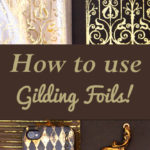
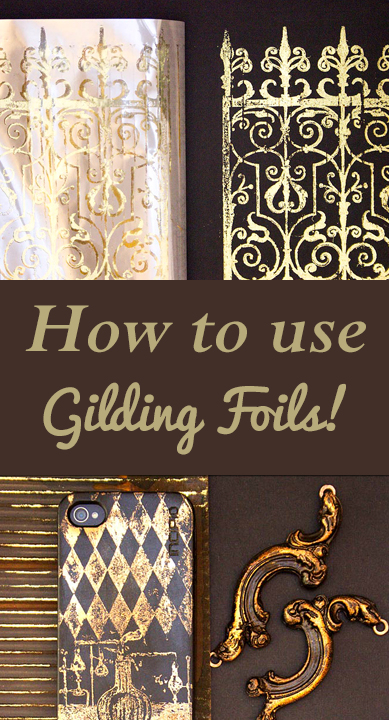

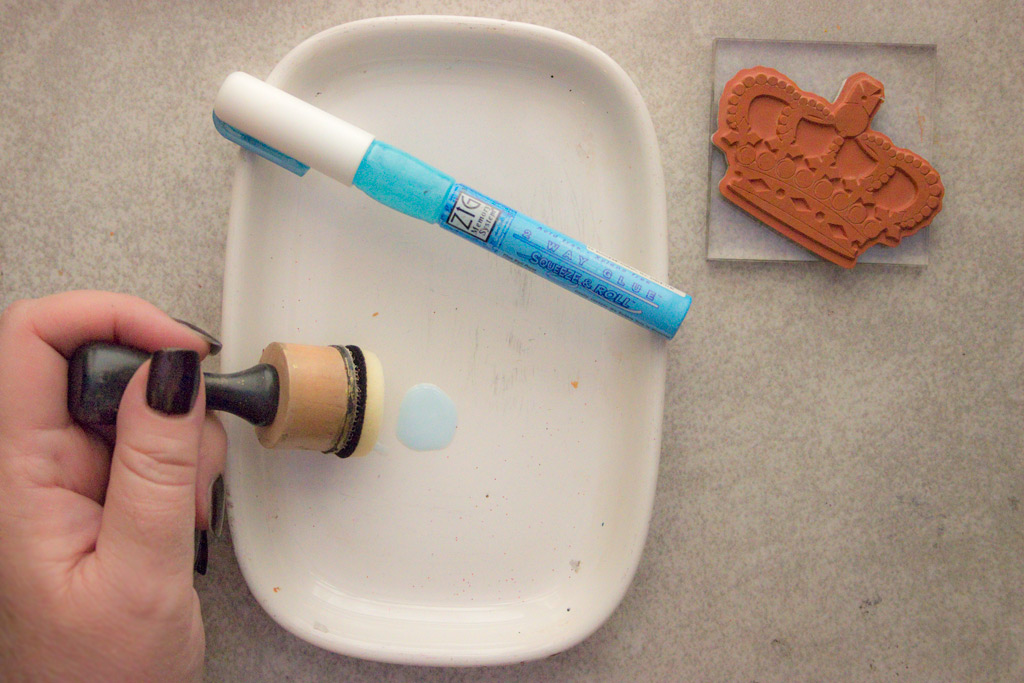
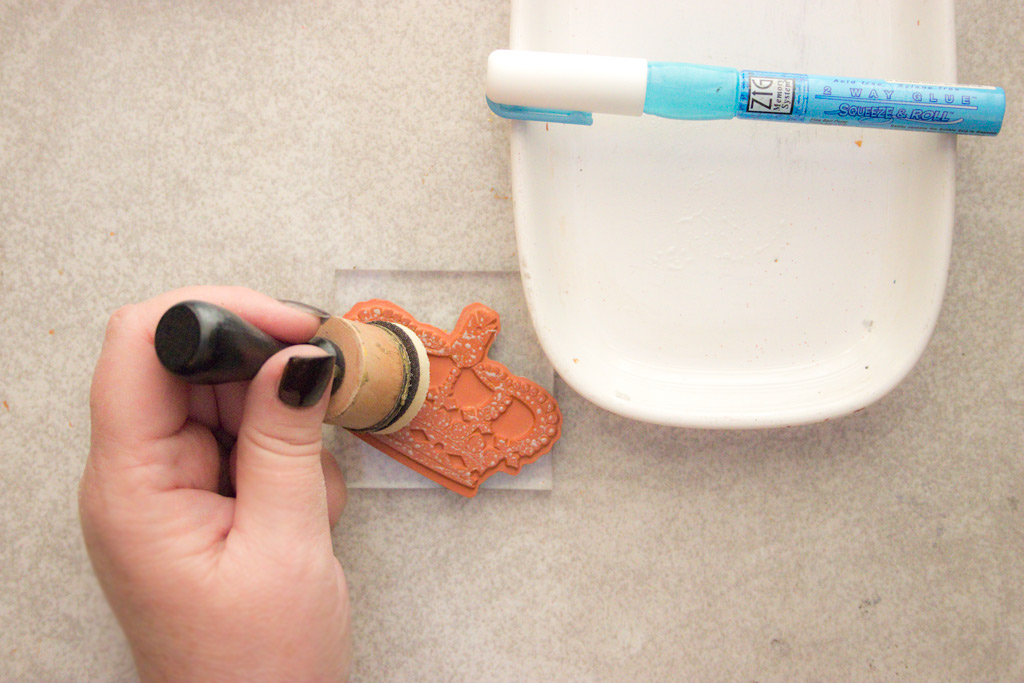
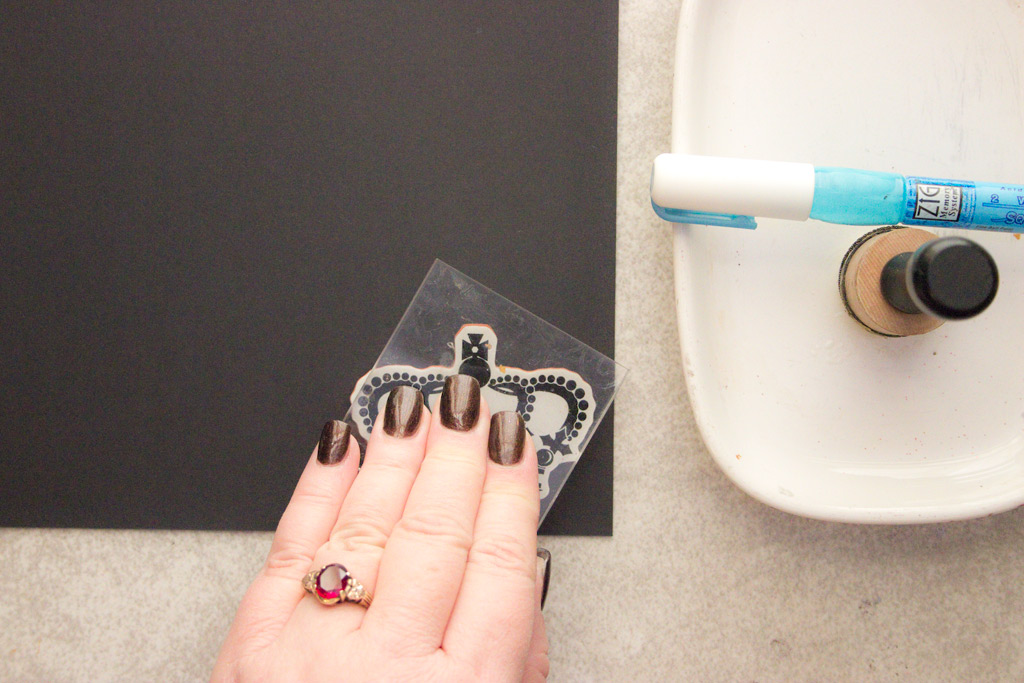
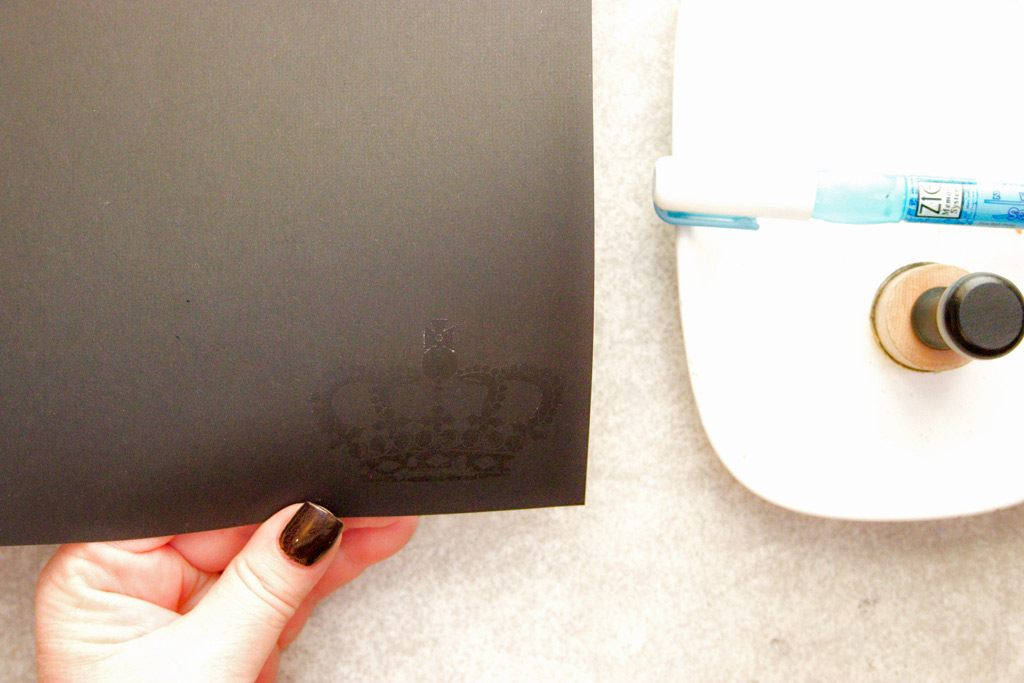
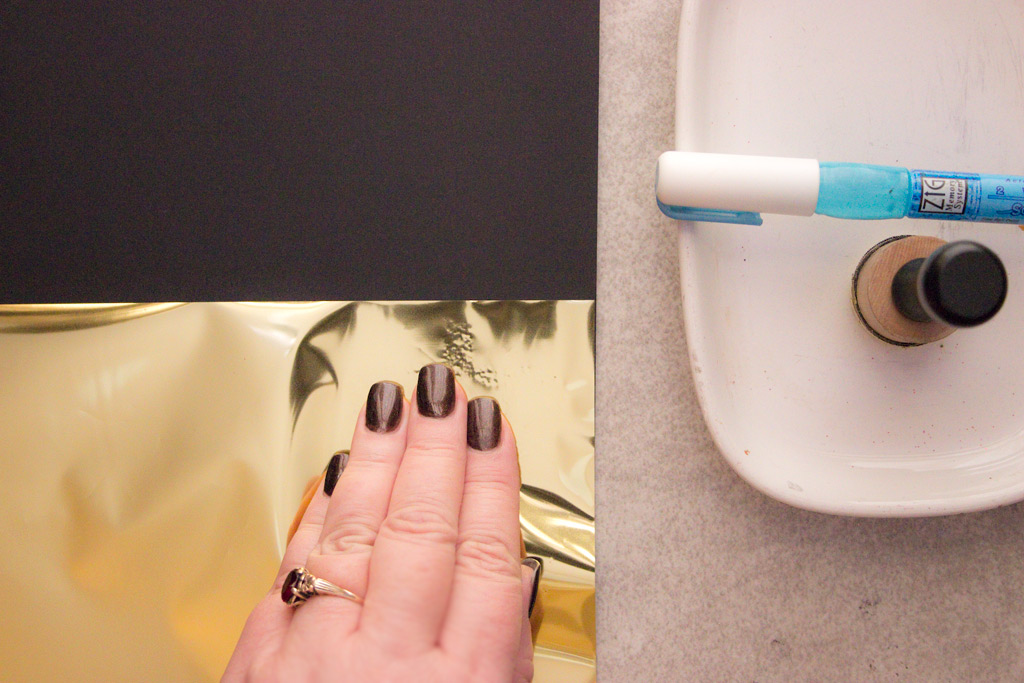
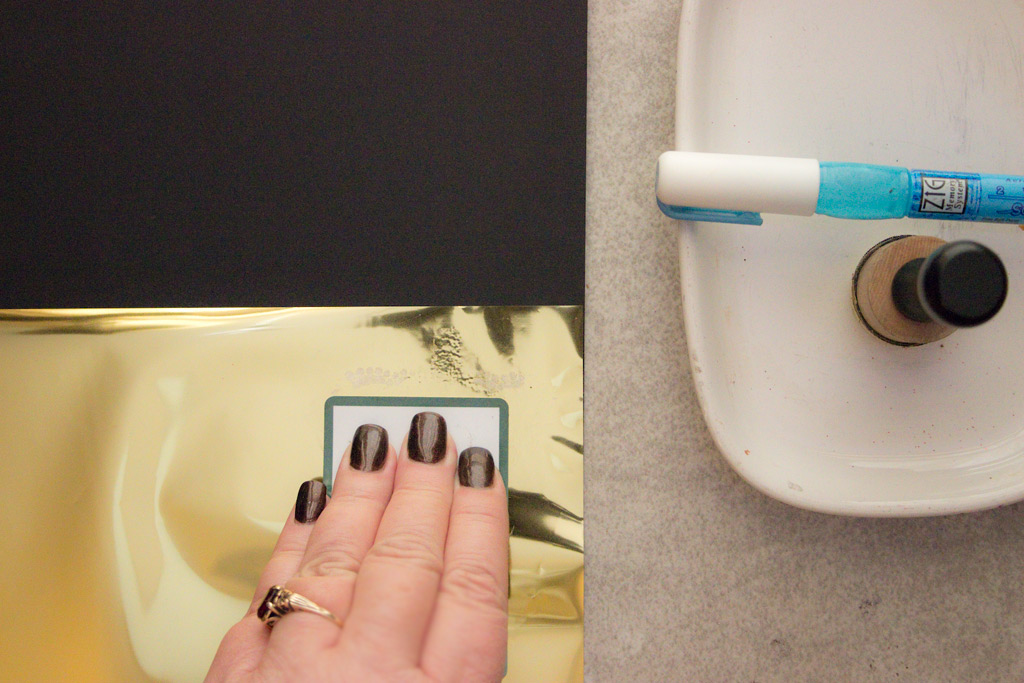
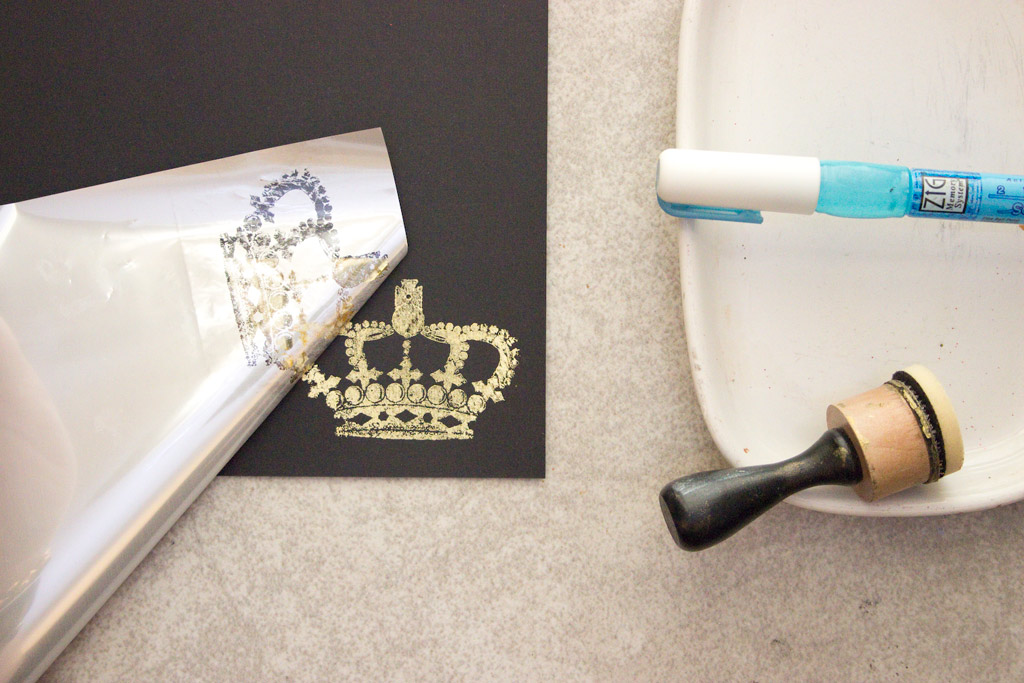
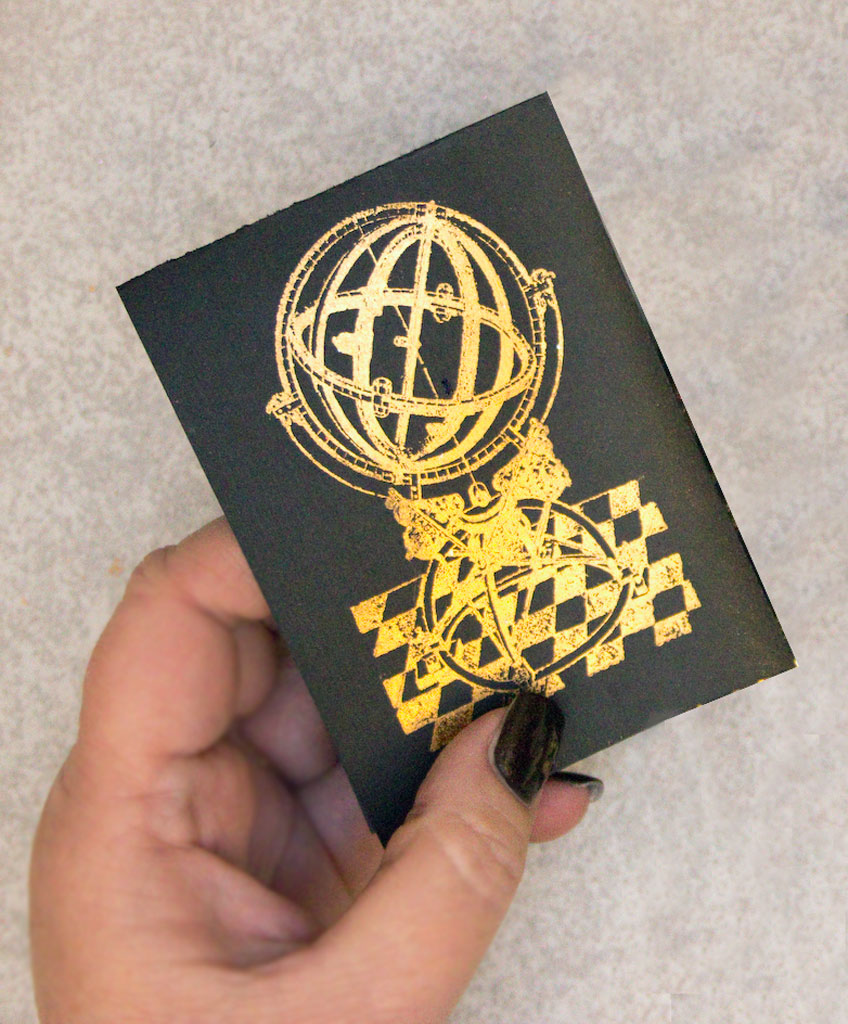
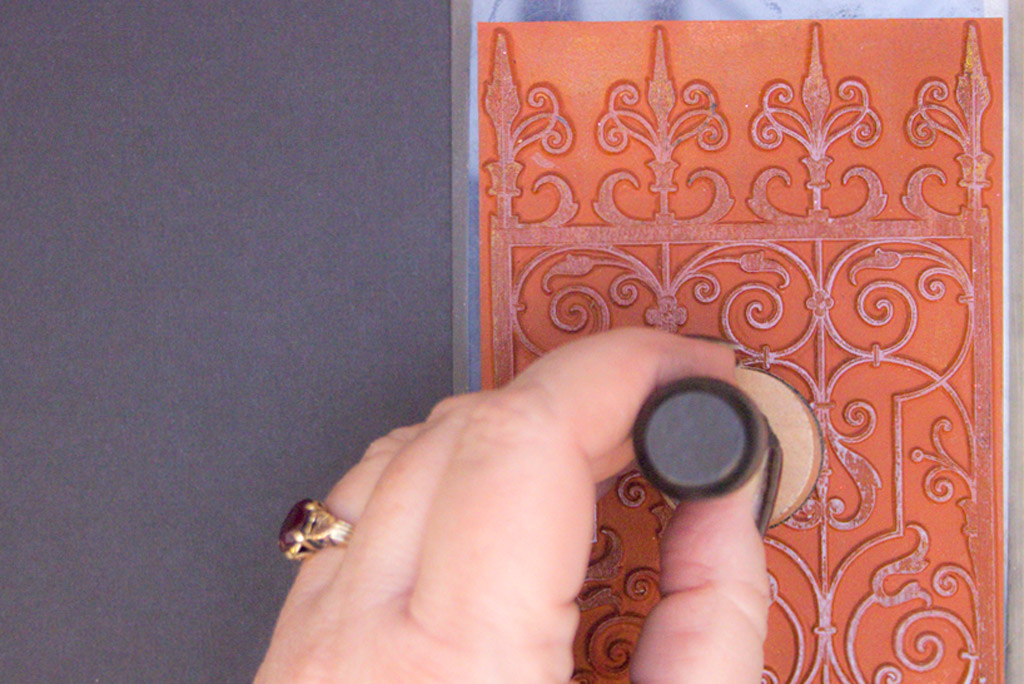
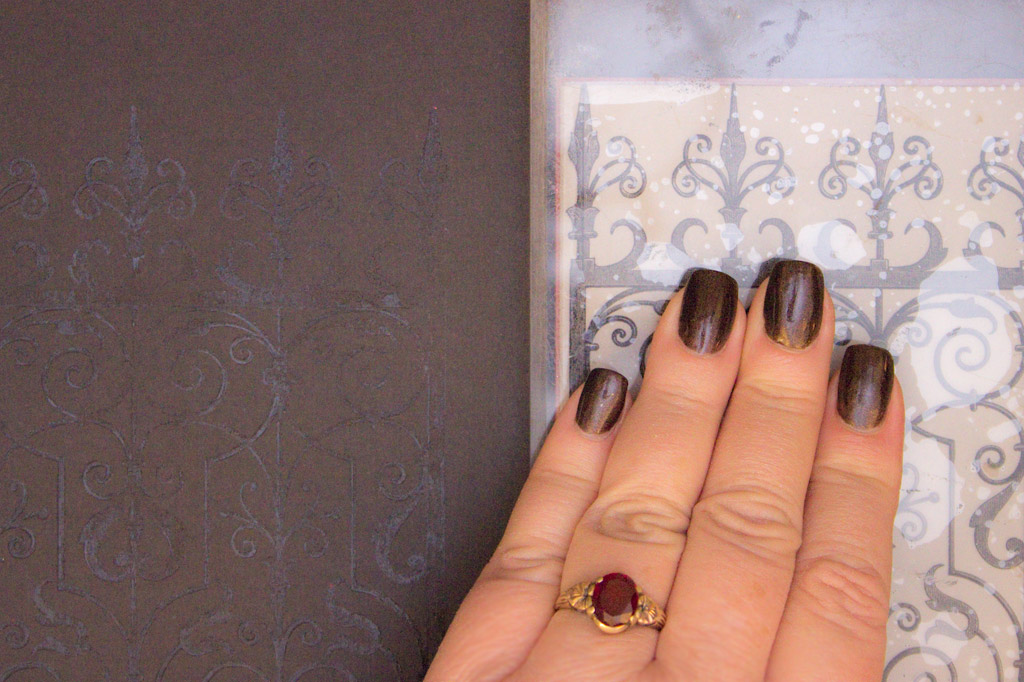
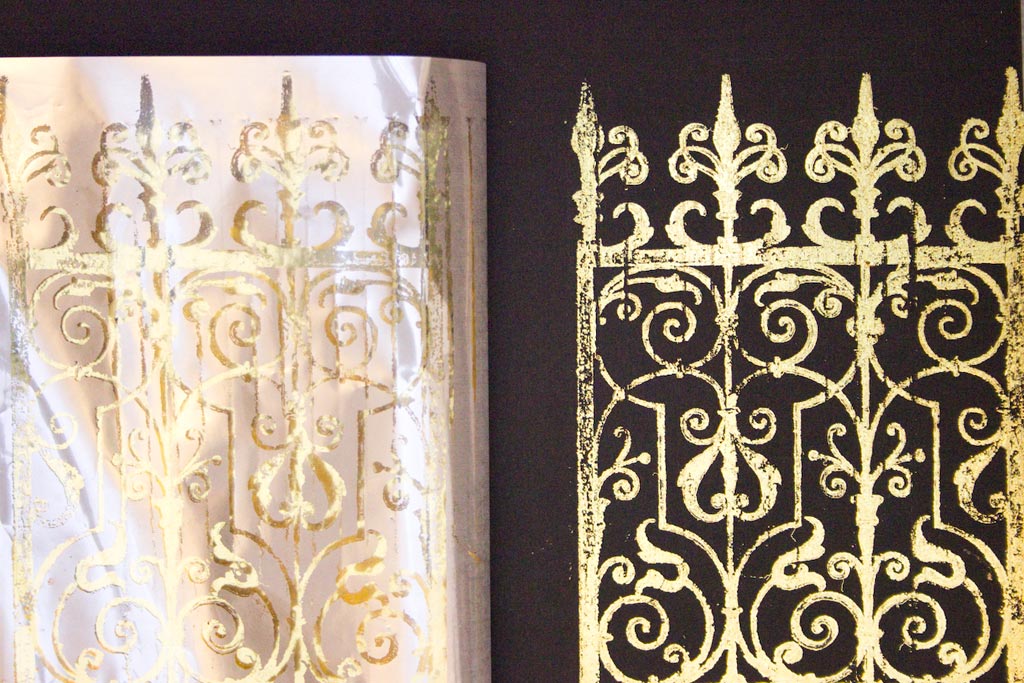
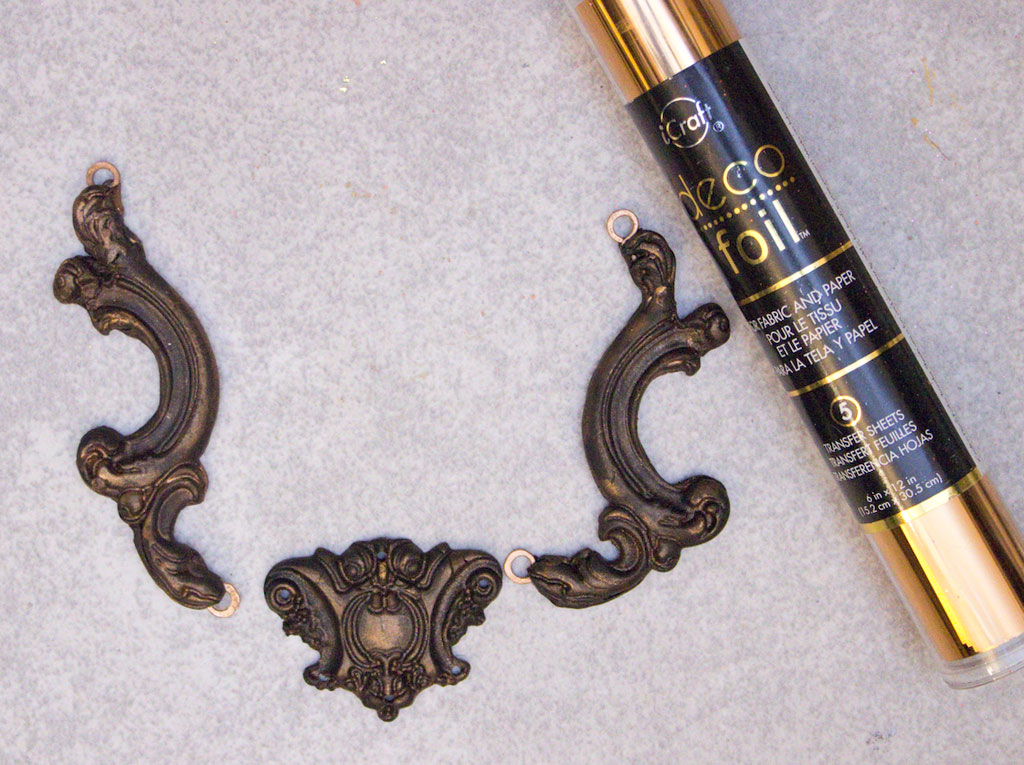
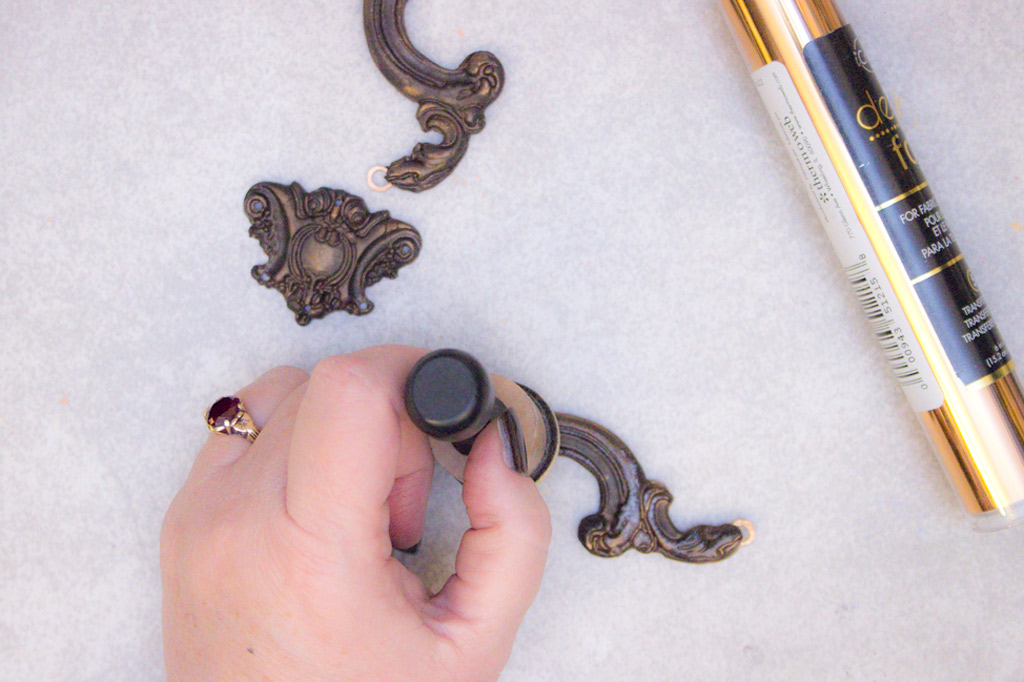
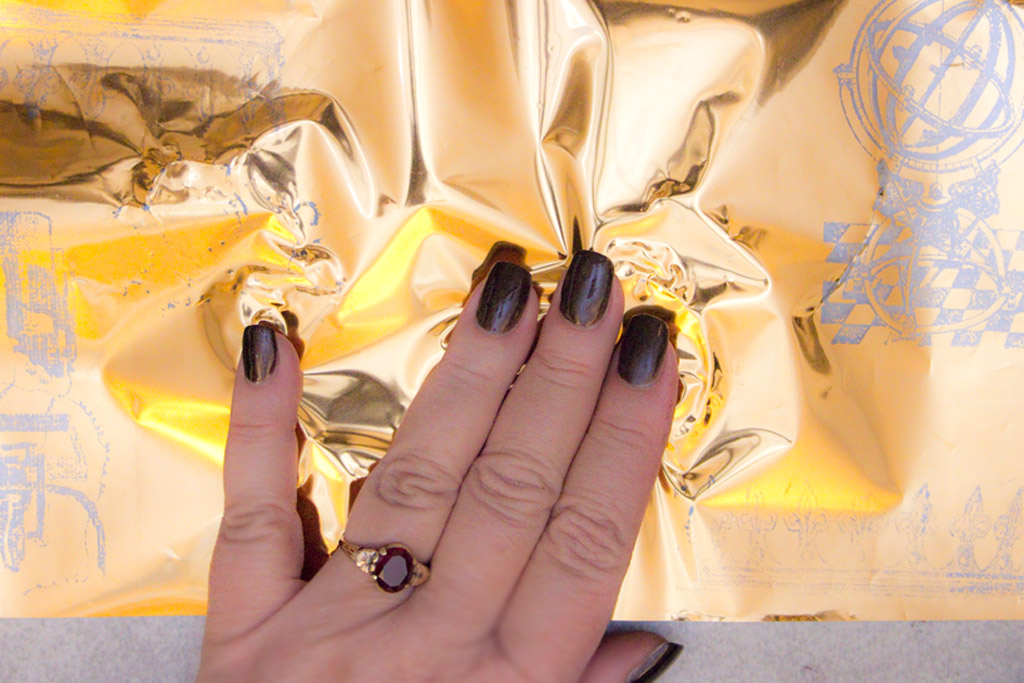
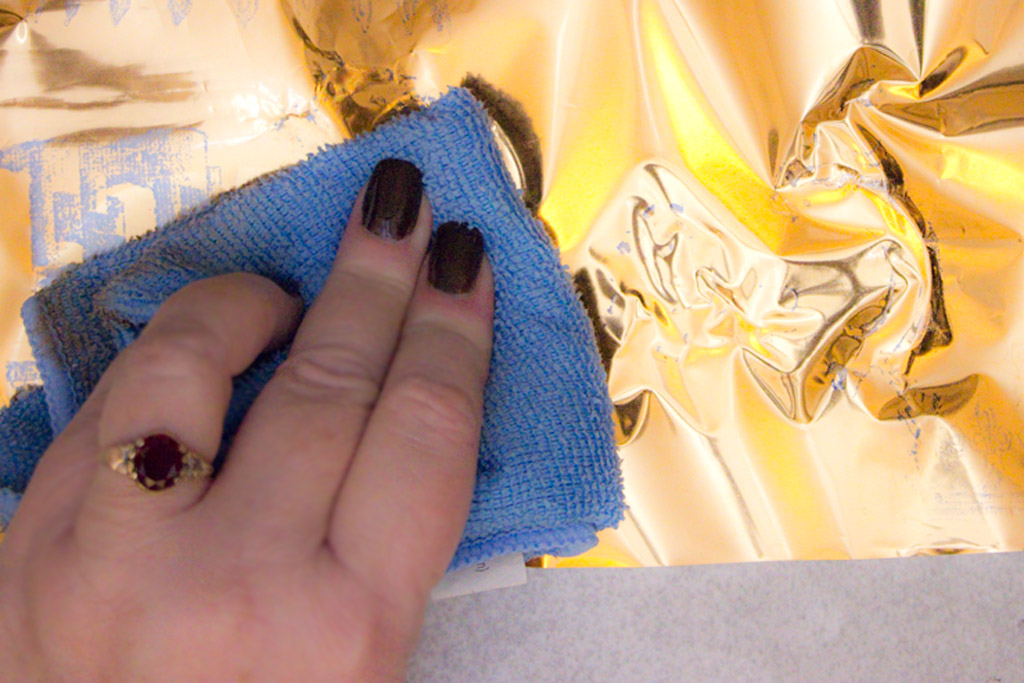
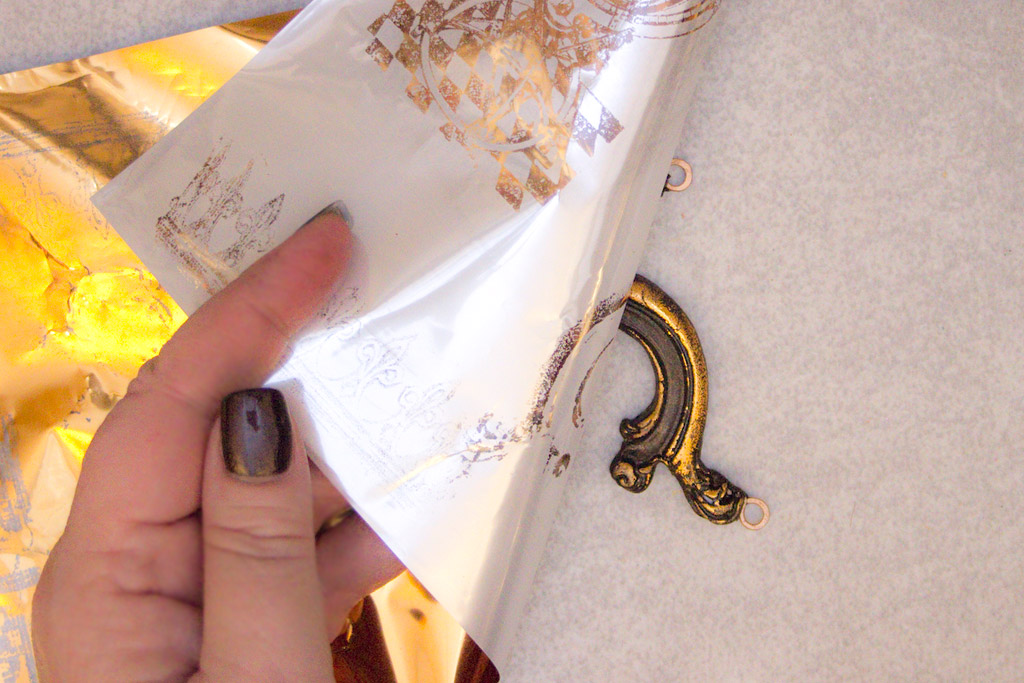
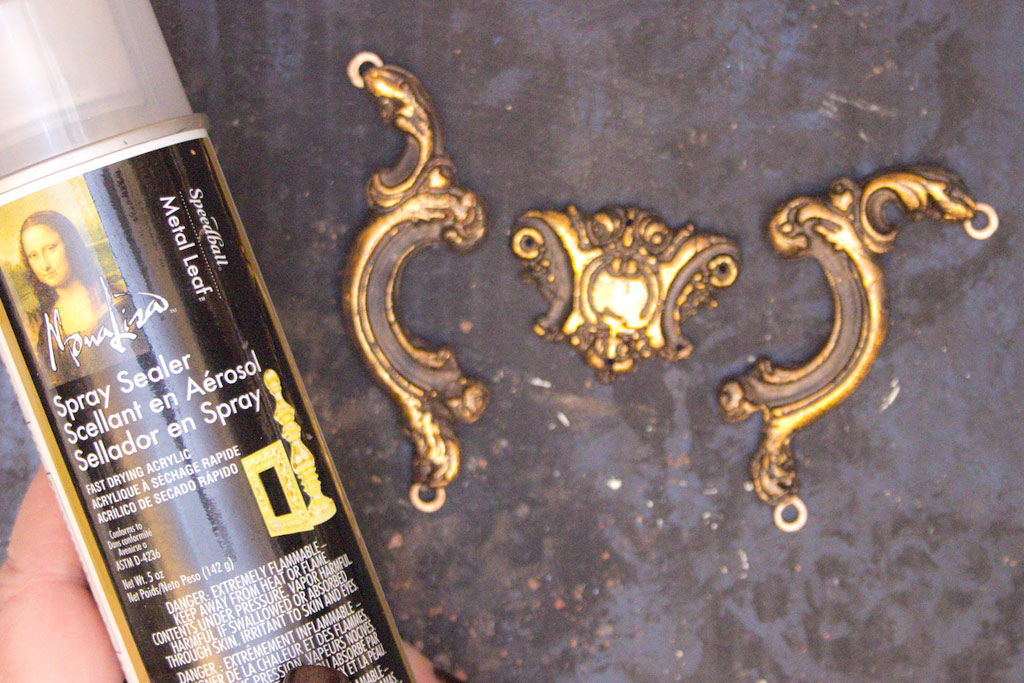
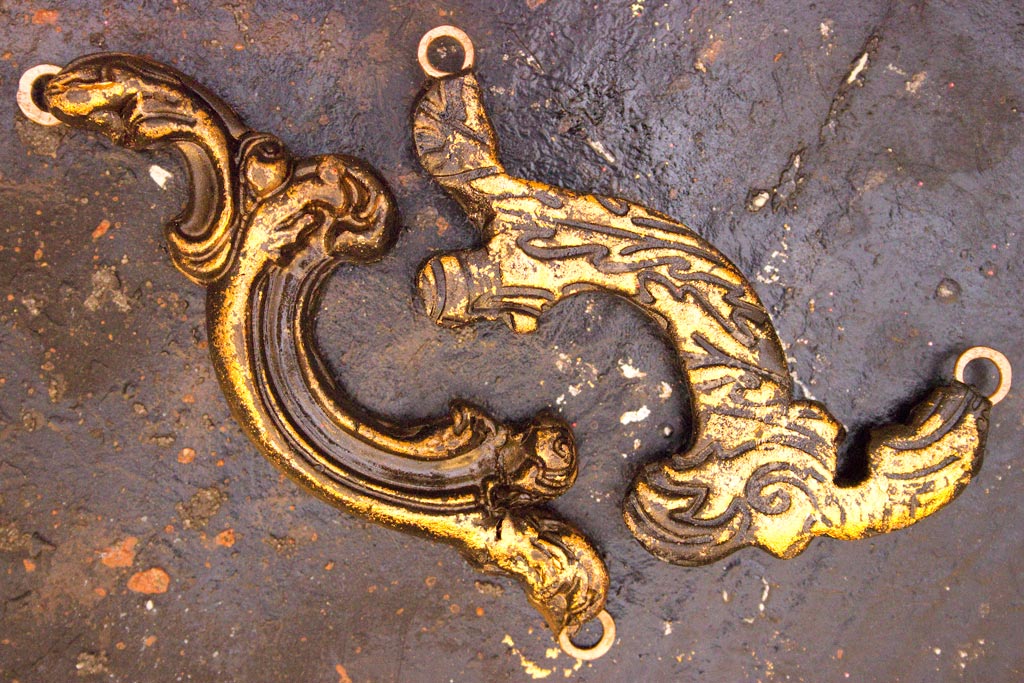
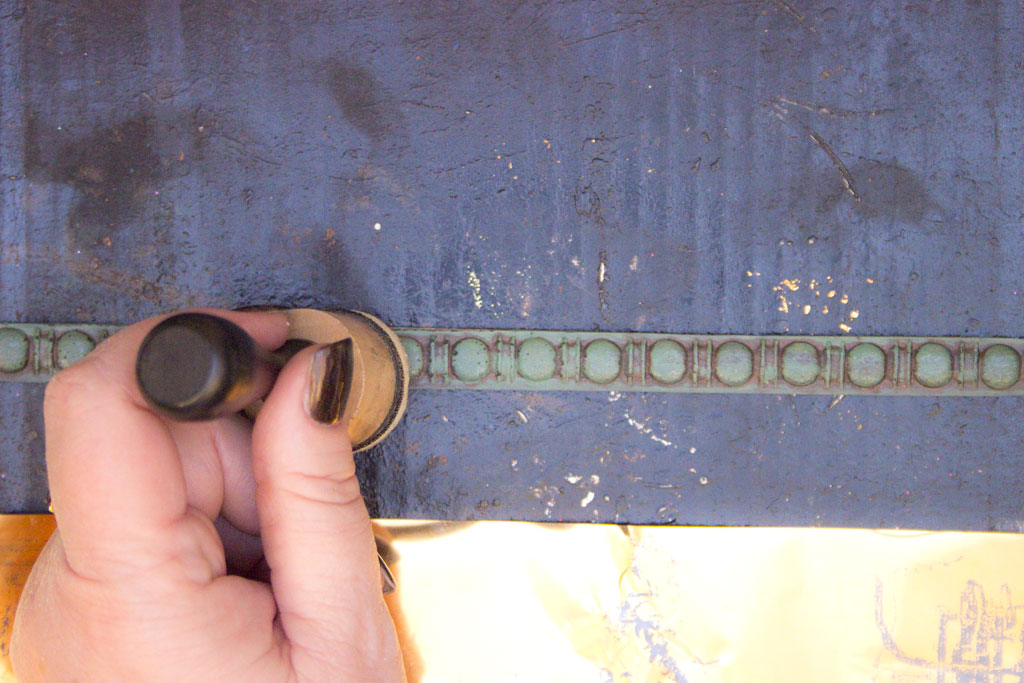
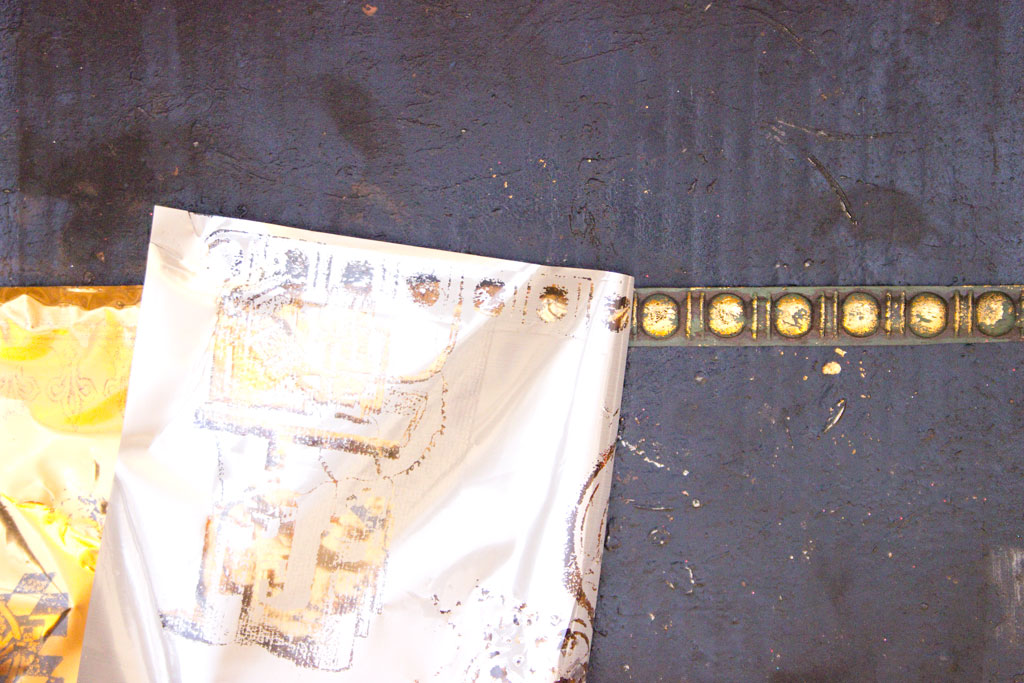
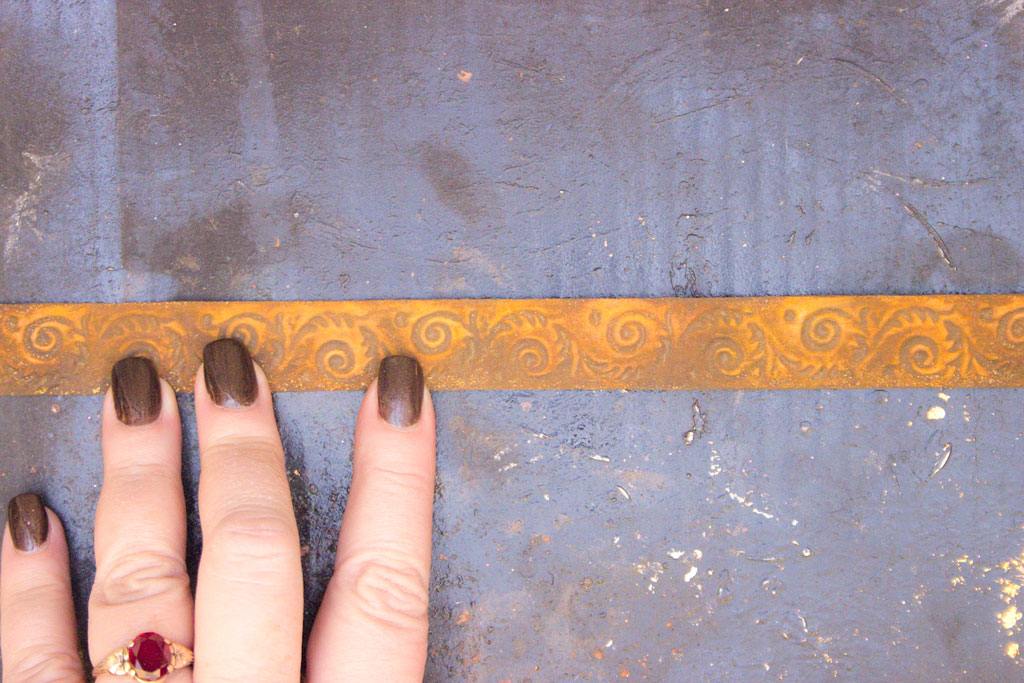
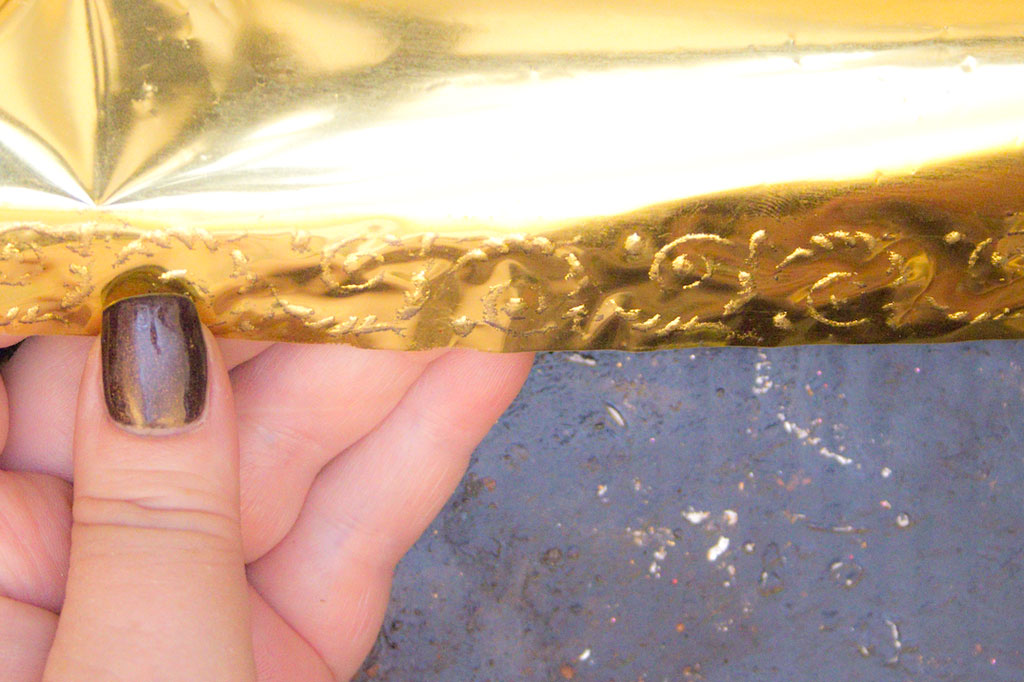
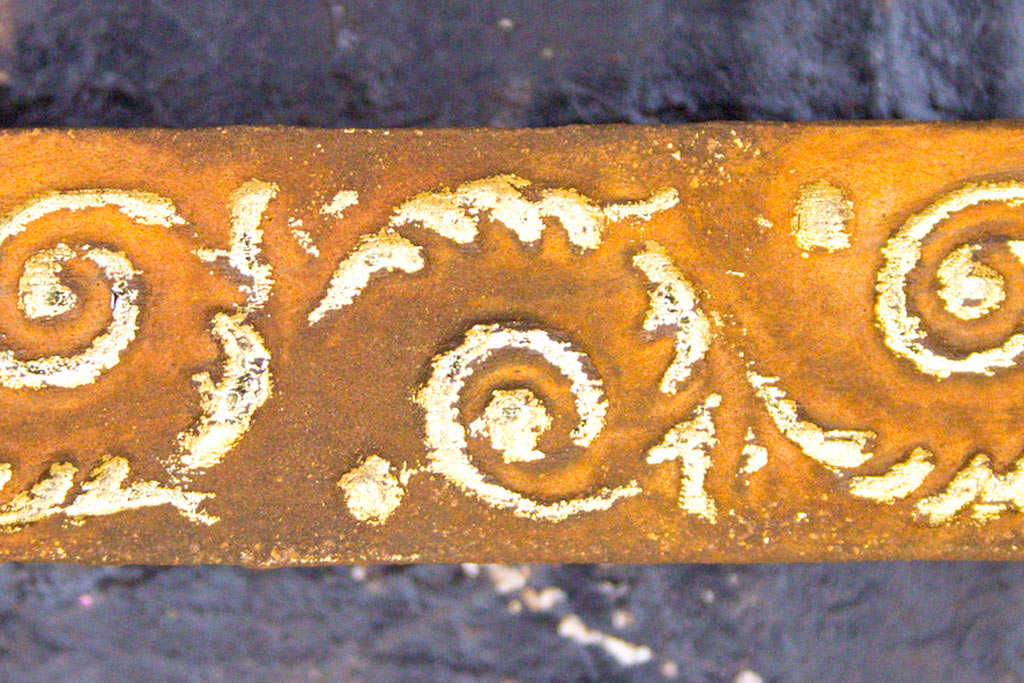
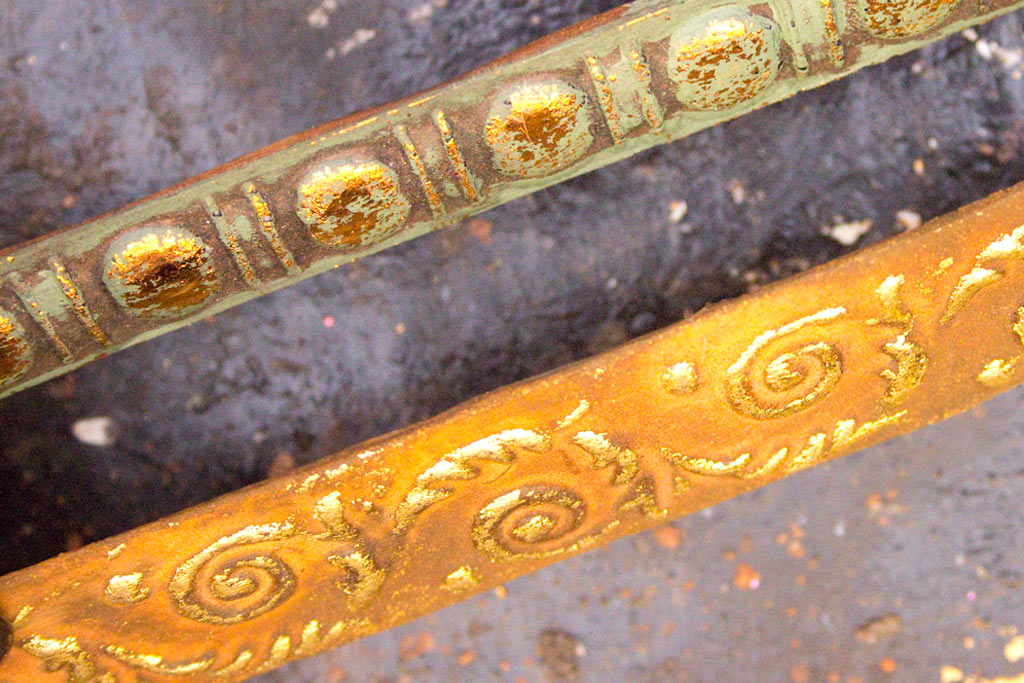
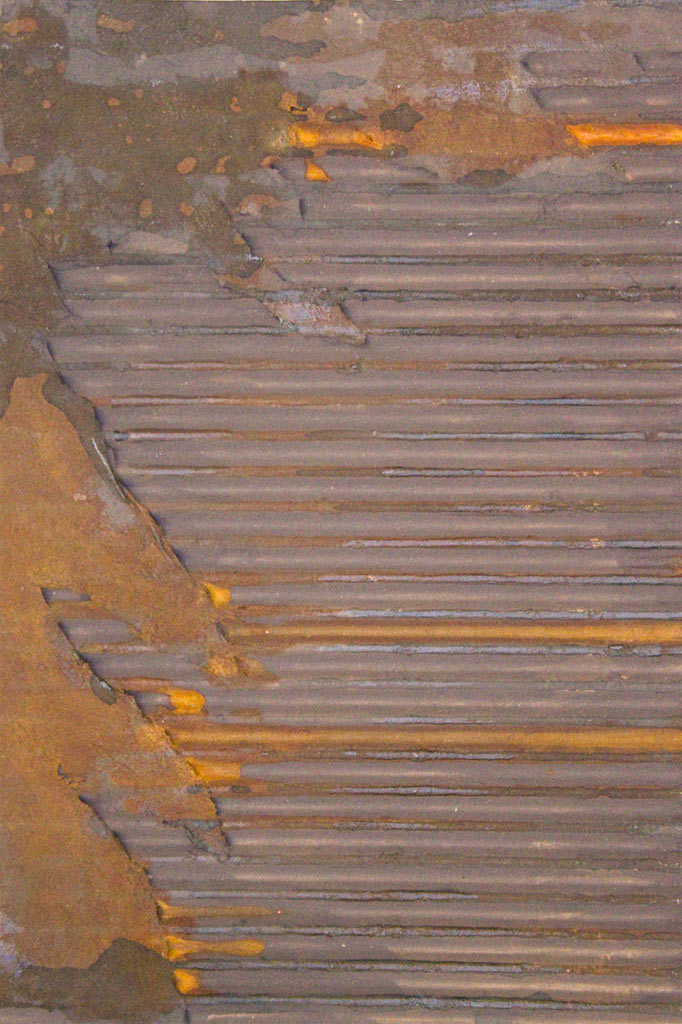
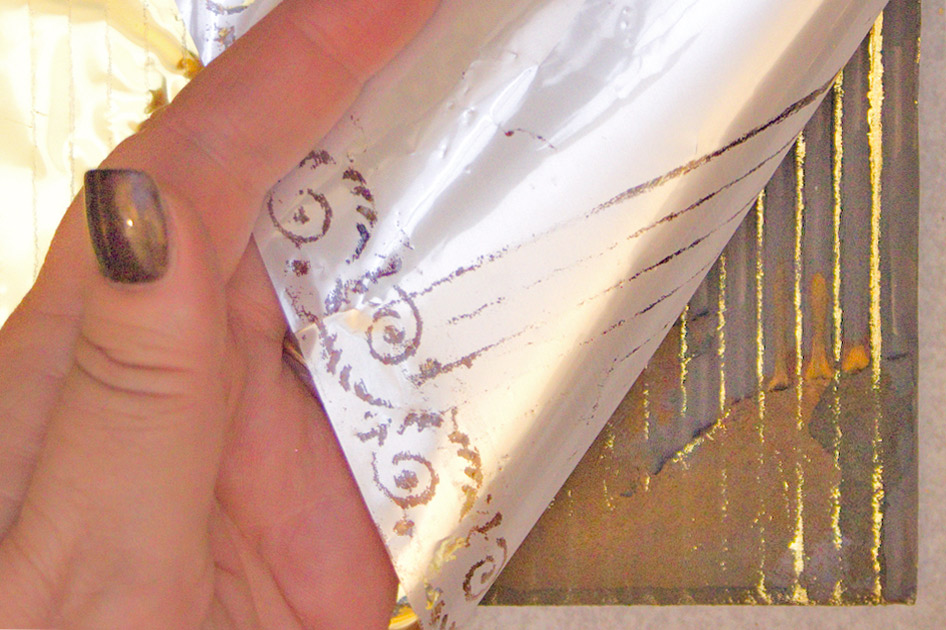
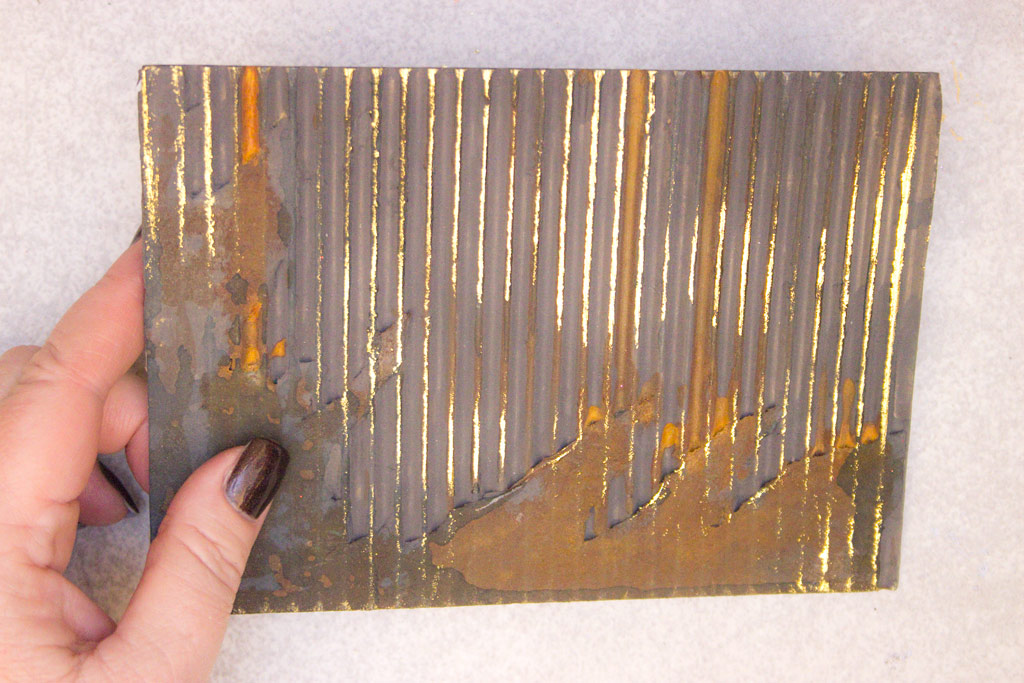
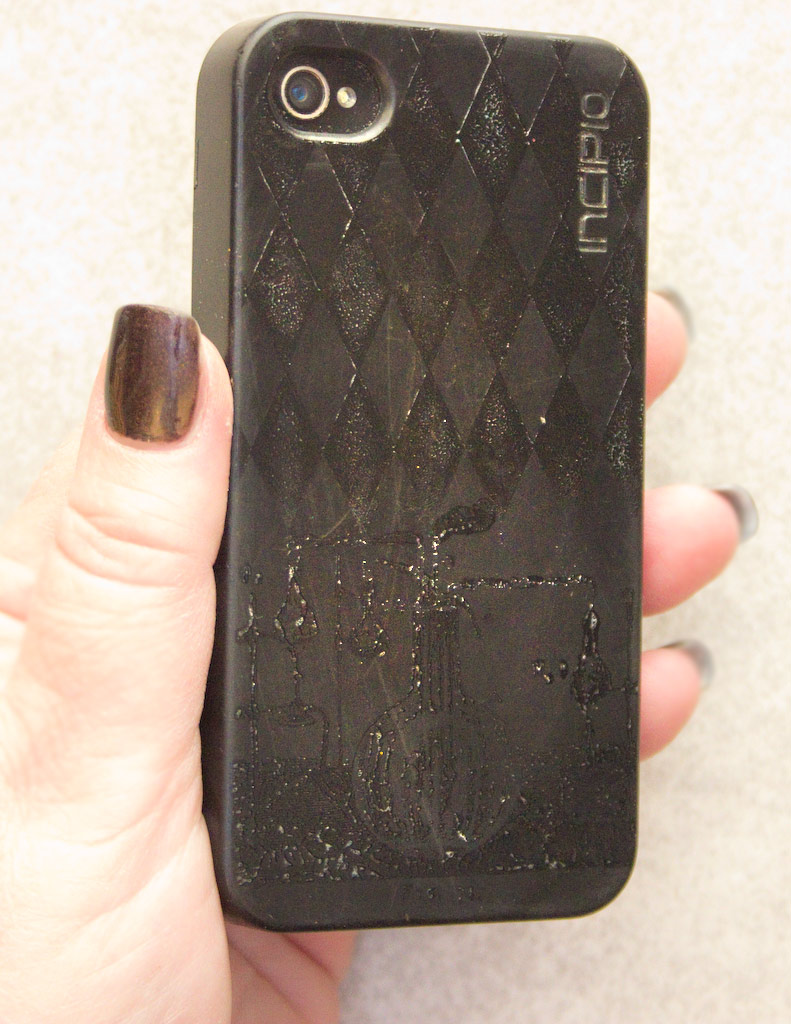

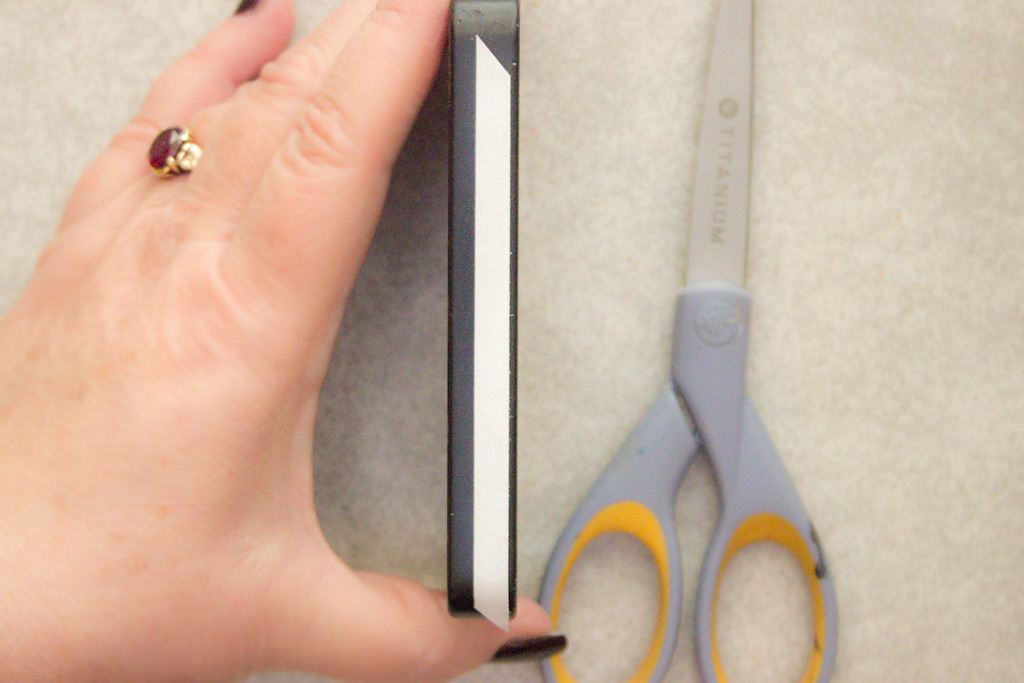
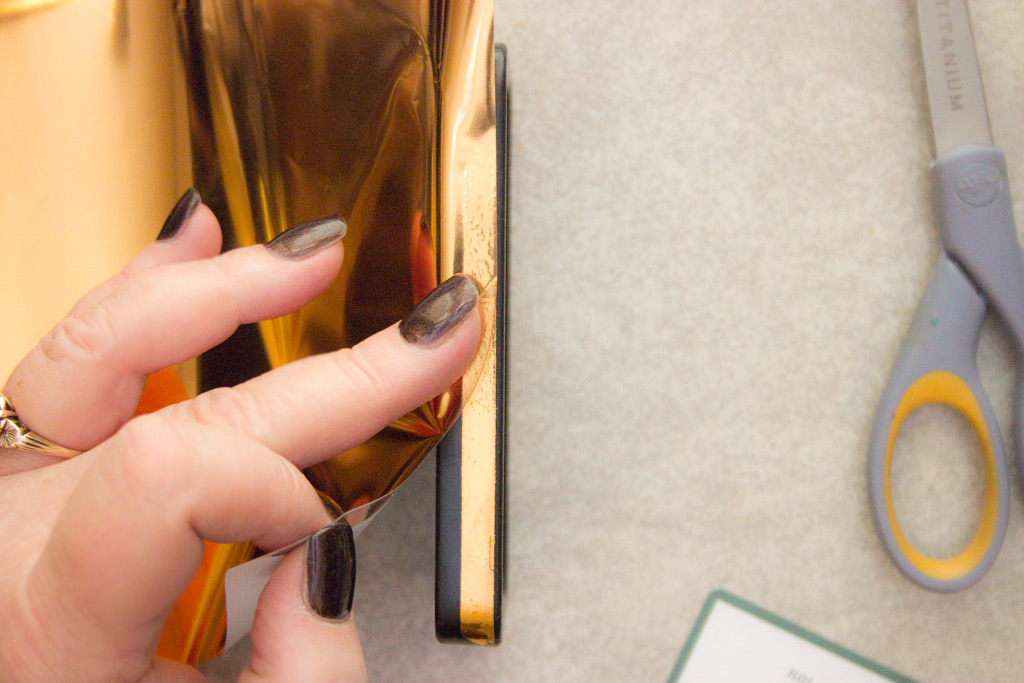
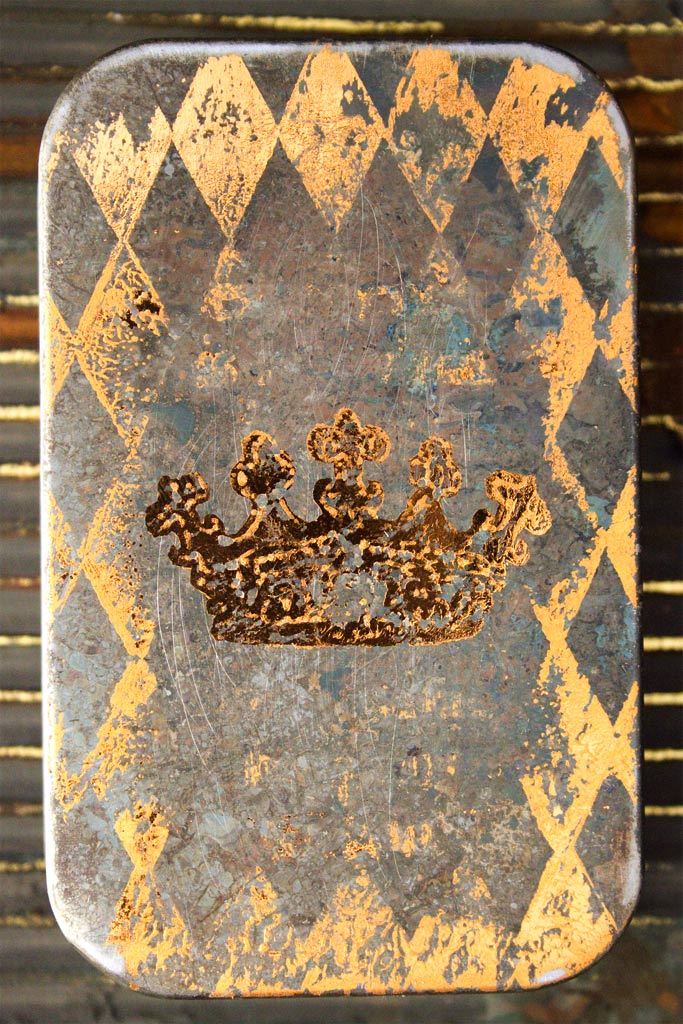
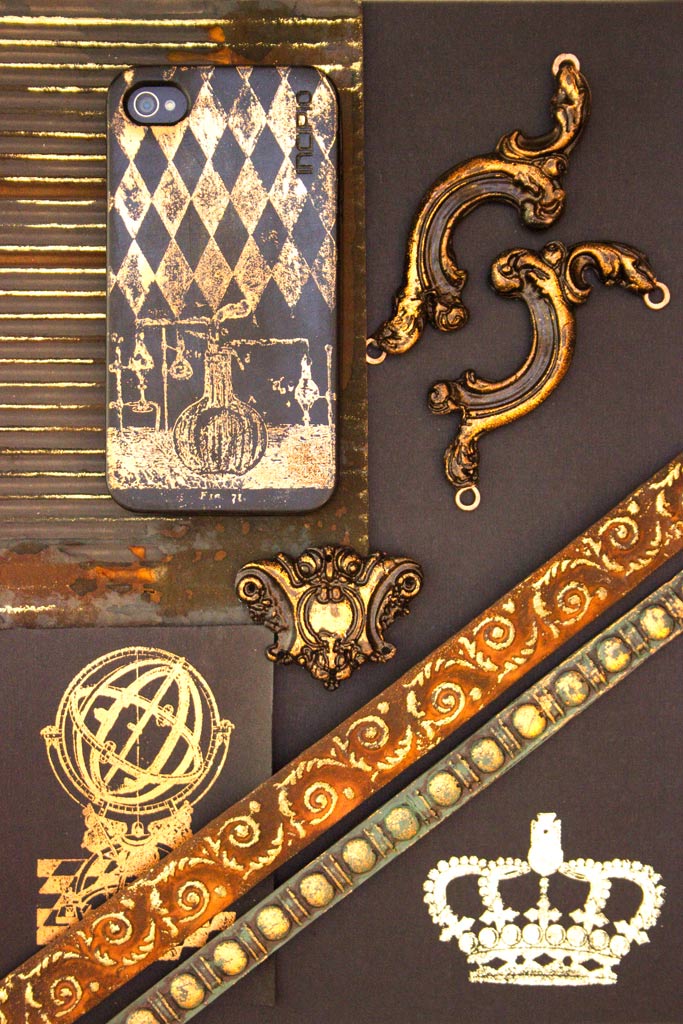
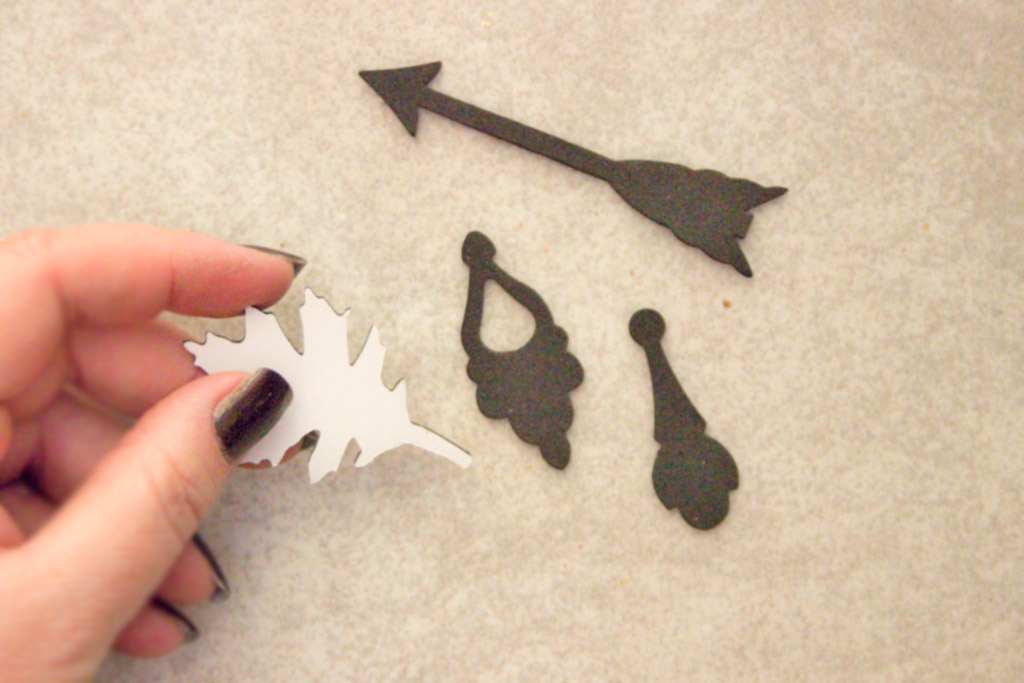

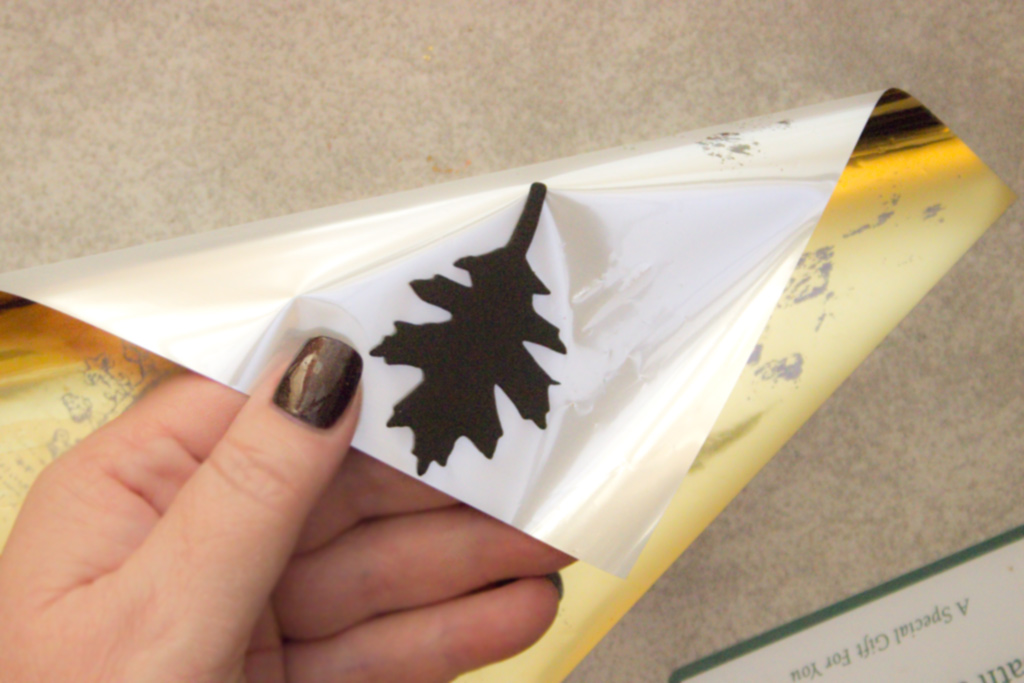
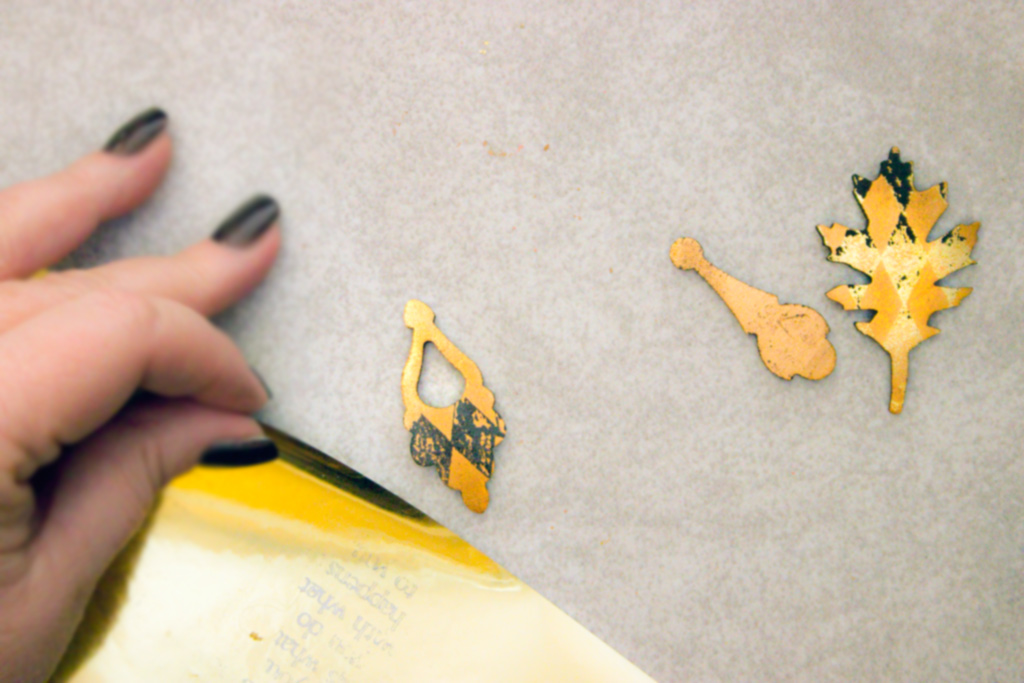
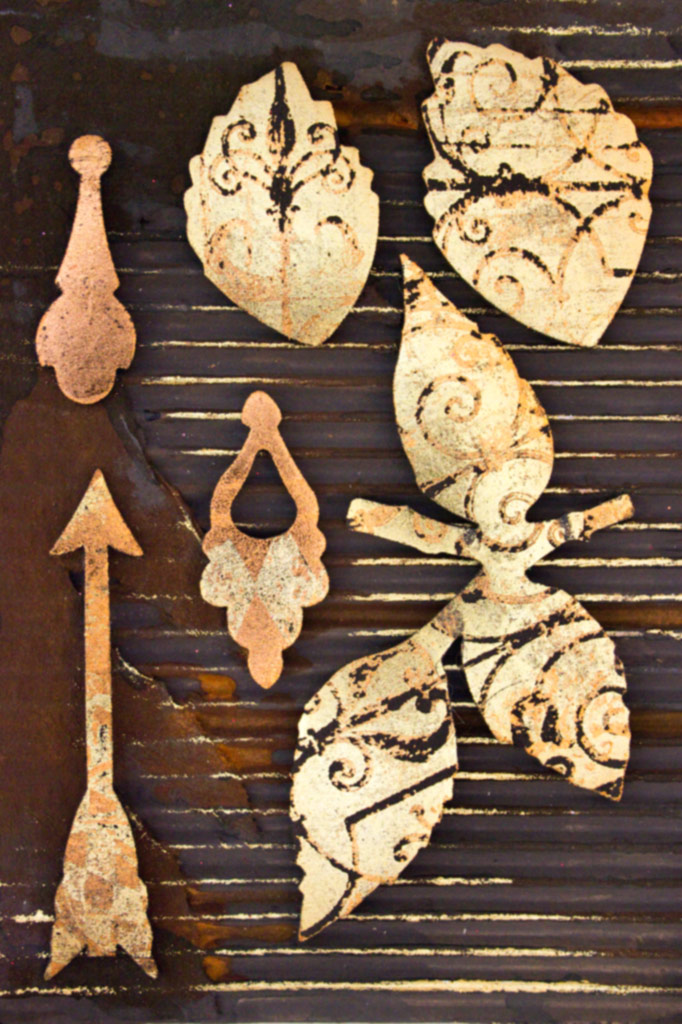
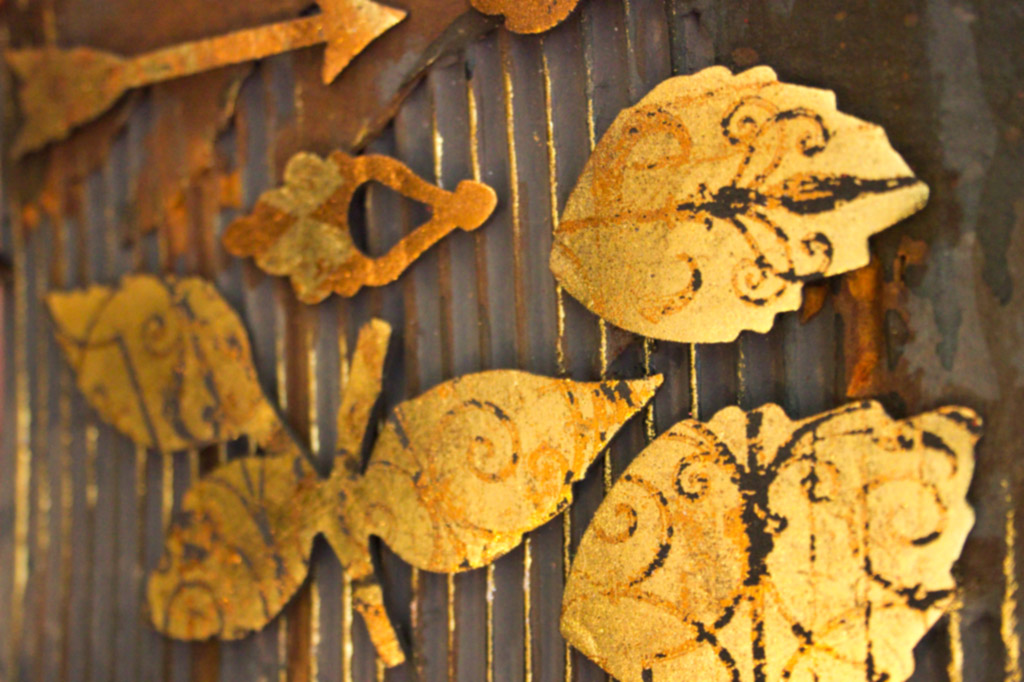
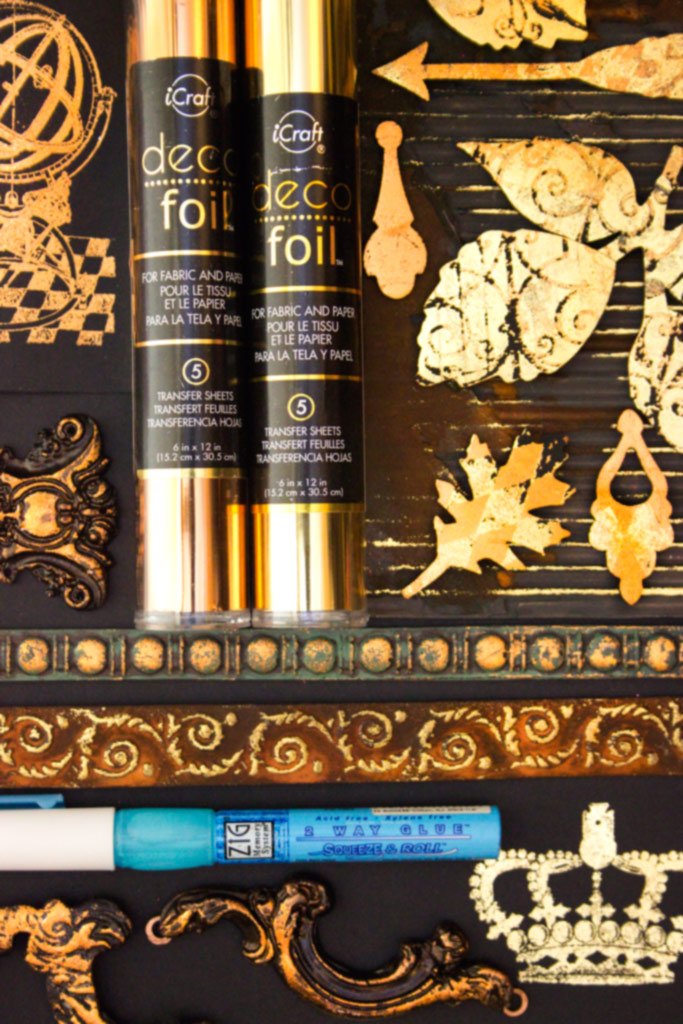

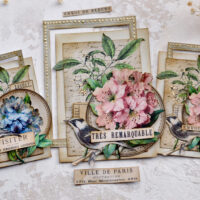
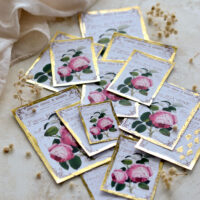
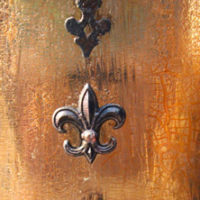




angela says
Fantastic tutorial I’m a novice and came across you by accident!!! Best accident I’ve had……thank you I can’t wait to try this.Are you on Pinterest please
graphicsfairy says
Thanks so much Angela, yes! Here is a link to us on Pinterest https://www.pinterest.com/graphicsfairy/ 🙂